Logitech G PRO X TKL Lightspeed Keyboard - G HUB Software Review
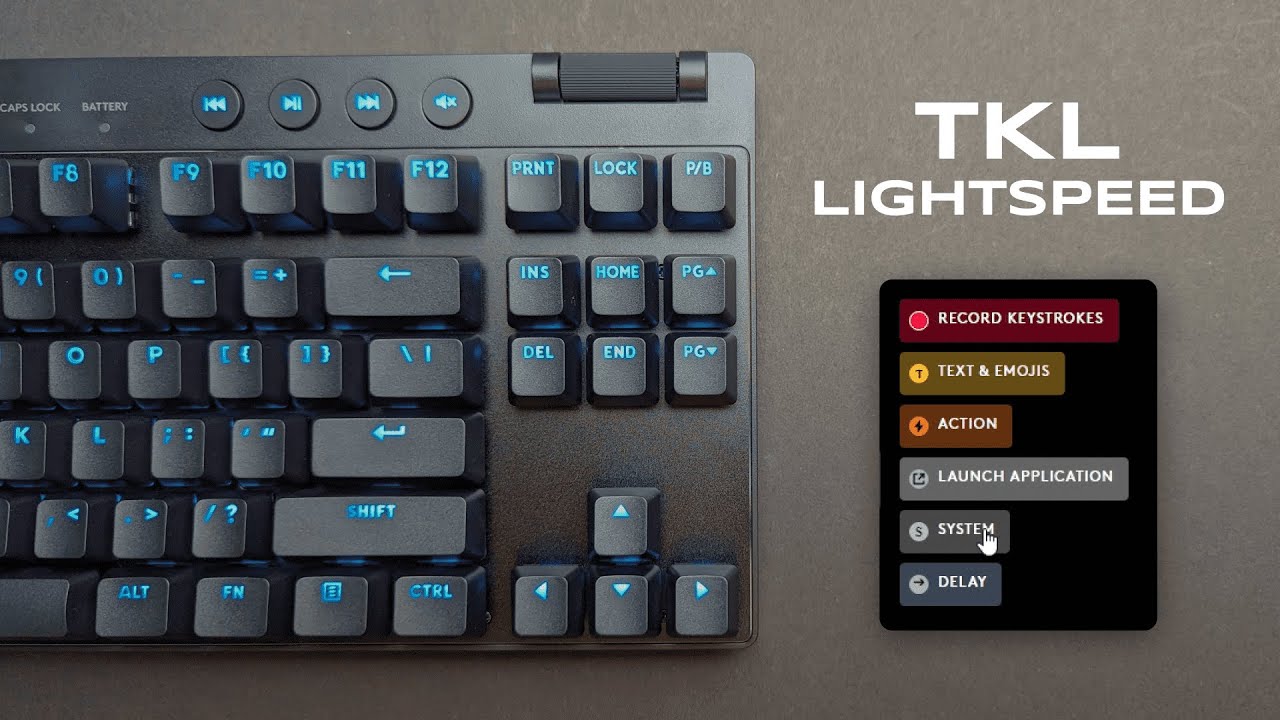
Hi — I’m Kova Tech. In this guide I’ll walk you through the Logitech G HUB software for the Logitech G PRO X TKL Lightspeed keyboard. I cover everything from the initial G HUB interface and onboard memory to lighting, key assignments, macros, and game-specific profiles. If you want to get the most out of your G PRO X TKL, this is the practical tour you need.
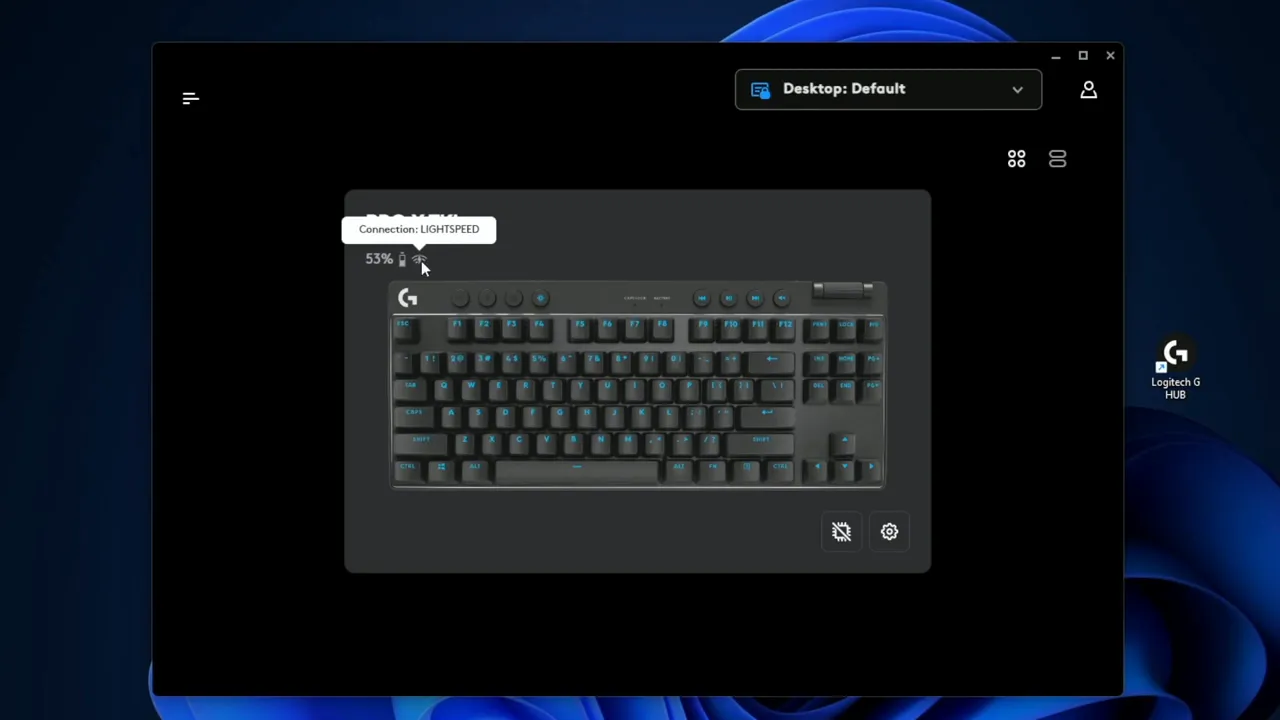
Quick start: G HUB main screen and settings
Once you install Logitech G HUB and plug in the keyboard, the main device screen shows a quick summary: battery life (remaining hours), connection type (I use Lightspeed), and an onboard memory indicator. That onboard memory toggle is useful — you can save profiles directly to the keyboard so your settings travel with the device instead of living only on one PC.
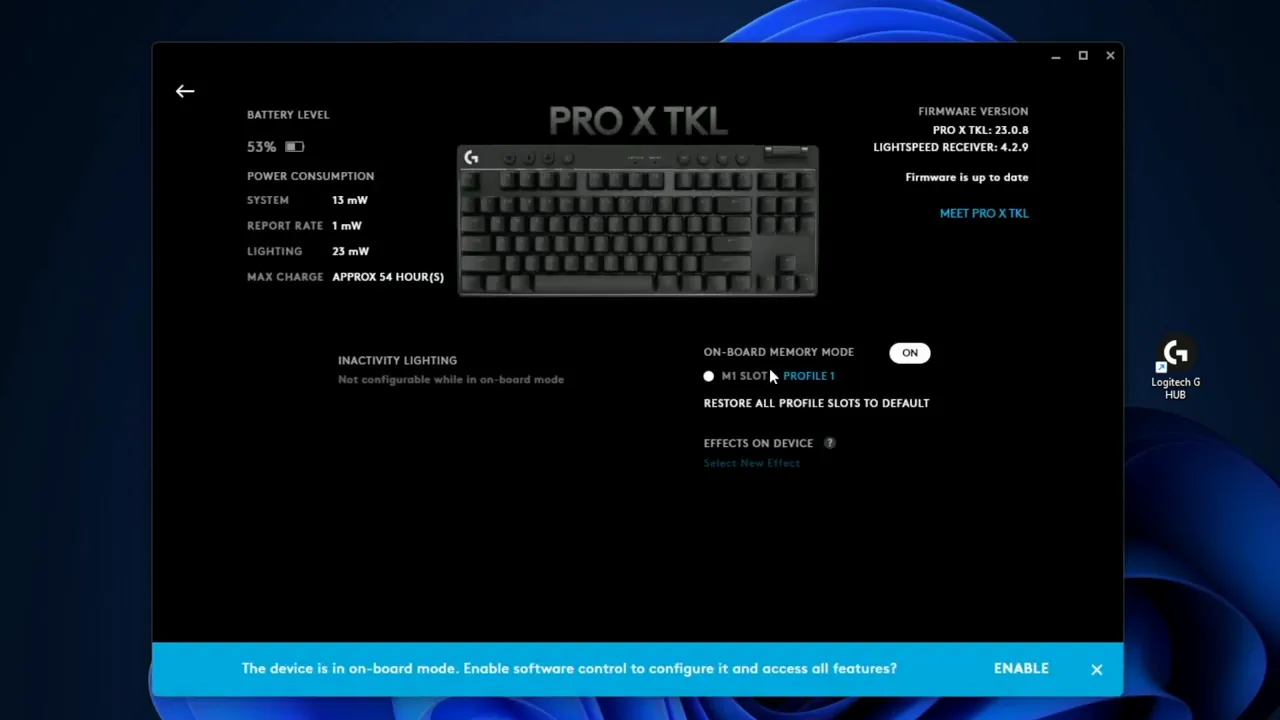
Open Settings to view onboard memory slots, polling rate, lighting options, maximum charge settings, and firmware versions. Turning onboard memory on saves the selected profile to the keyboard; switch it off to keep everything on the computer.
Lighting: LightSync tab and presets
The LightSync tab is where G HUB shines (pun intended). You can choose presets or set a fixed color. By default I keep mine on a static blue, but G HUB lets you pick any color or animation preset — waves, ripple, press echo, and more.
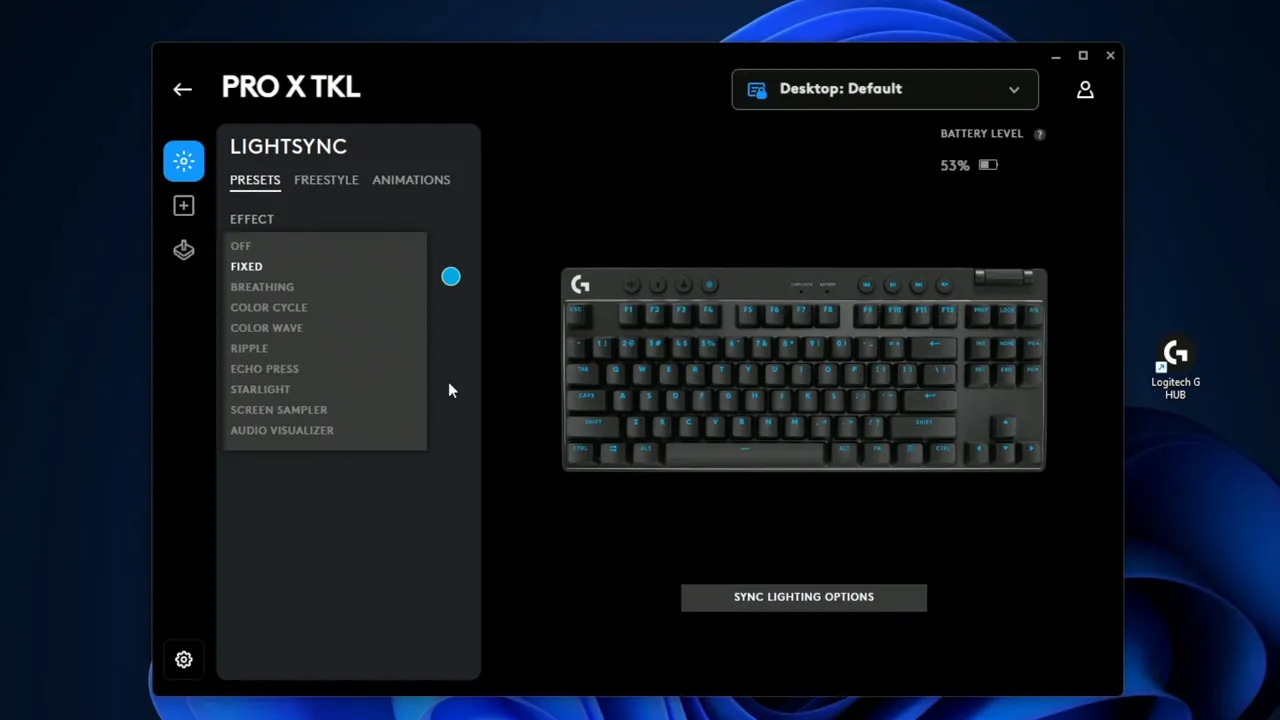
Changing to a fixed color is as simple as clicking the color swatch. Want green? Click green and the keyboard updates immediately via Lightspeed.
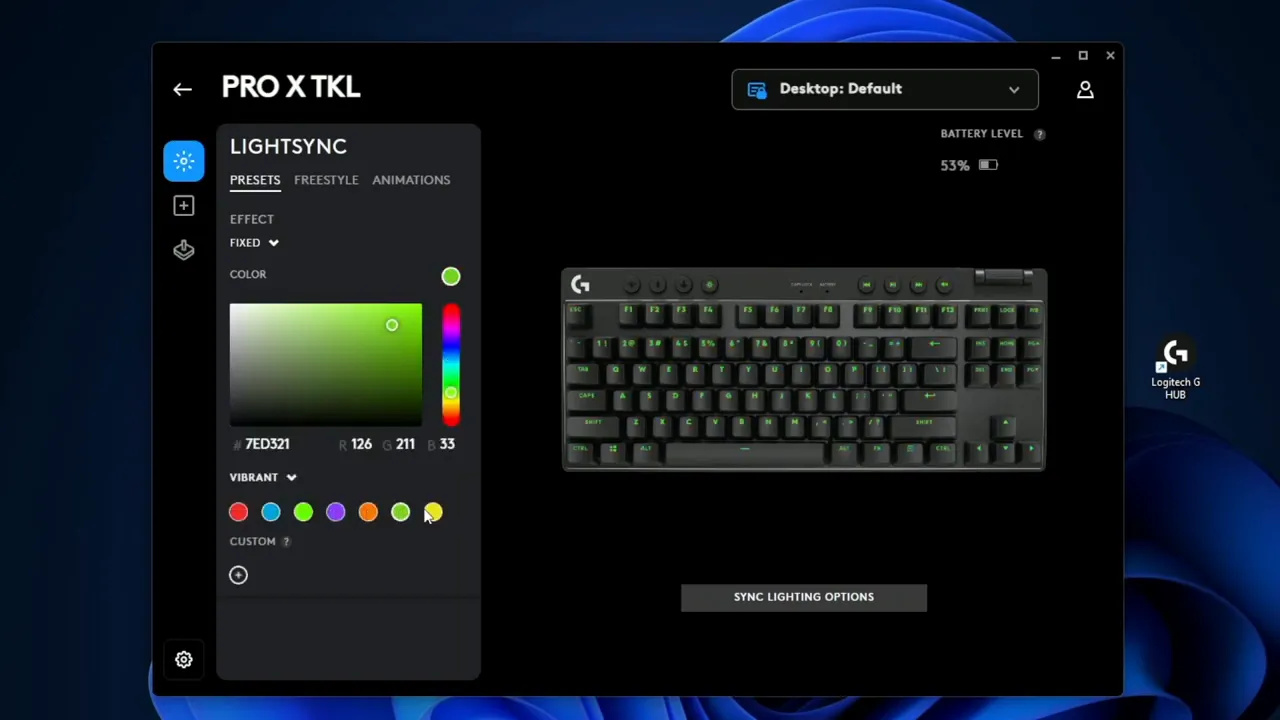
If you prefer interactive effects, Echo Press animates keys when you press them. You’ll see the pressed key change color and fade back, which is both useful visually and fun when streaming or testing caps.
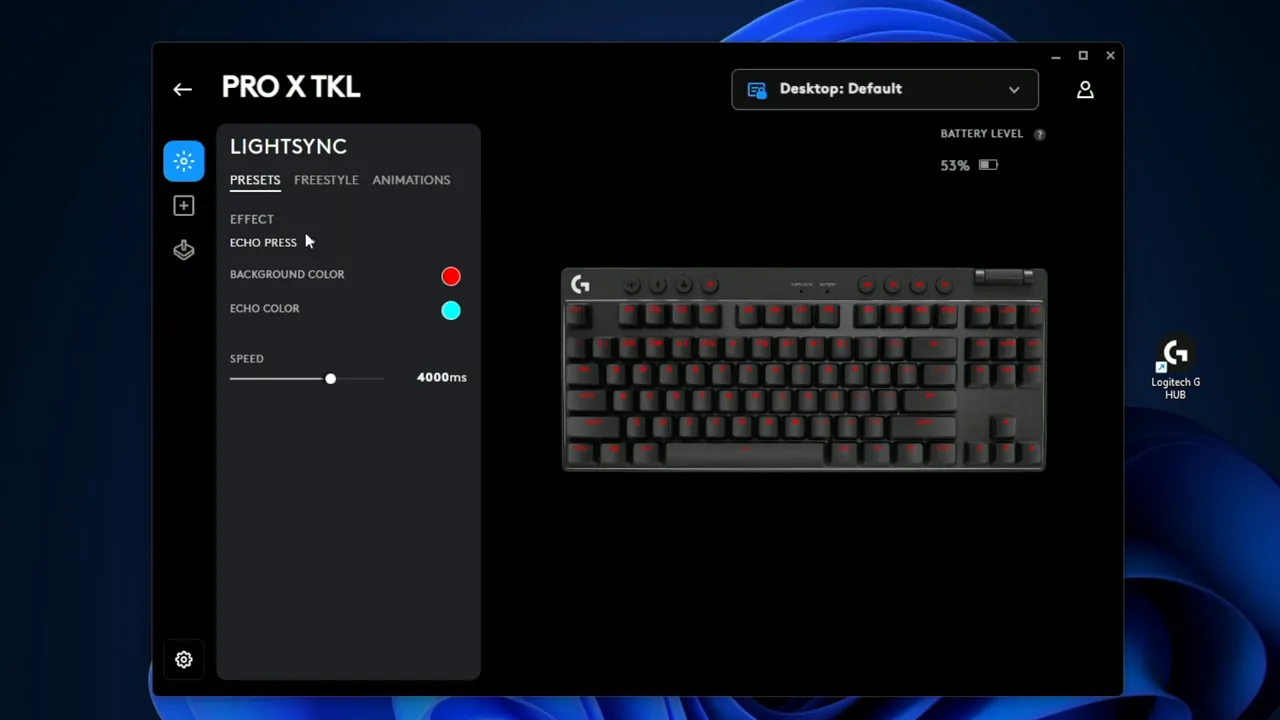
Custom lighting zones
G HUB lets you paint individual keys any color. Common setups include making WASD or other movement keys a contrasting color for quick in-game recognition. Custom animations and layered effects are also available if you want something more dynamic.
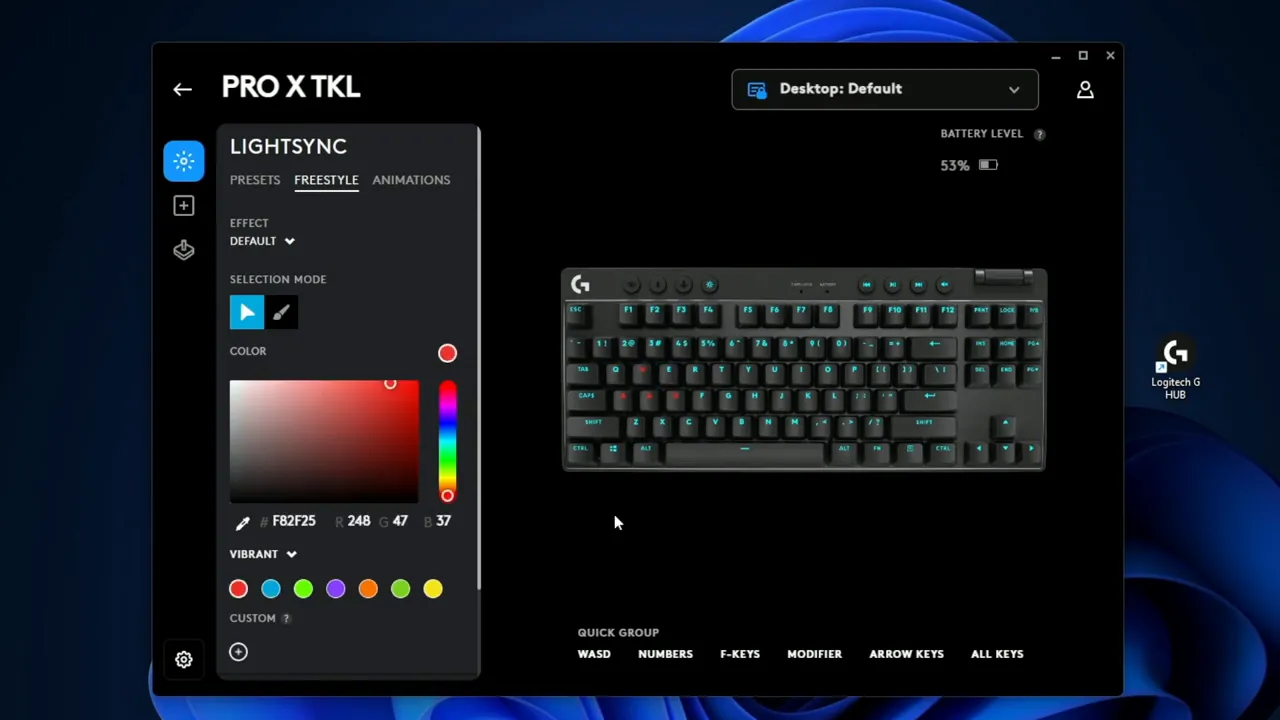
Assignments: remap keys and create shortcuts
The Assignment tab covers remaps, system commands, app-specific actions, and macros. There are three main groups:
- Commands: Preset editing or Windows shortcuts and navigation keys you can drag onto any key.
- Actions: Application-specific controls (for example, OBS toggles or Discord mute/deafen).
- Systems: Media controls, scroll, refresh, DPI toggles, copy/paste, and other OS-level functions.
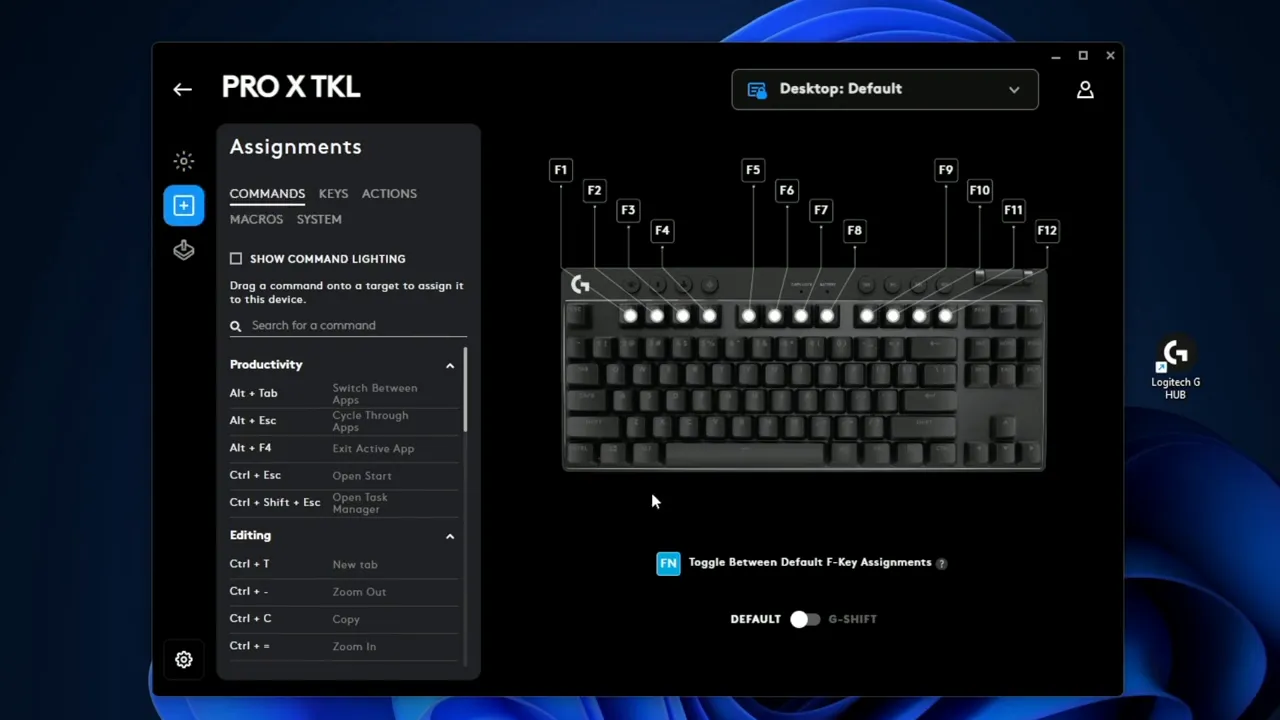
To remap, drag the desired command onto the target key. You can always revert a key to default using the “use default” option.
Macros: record, assign, and automate
Macros are where G HUB becomes a productivity (and gaming) multiplier. Create simple or complex macros directly in the software and assign them to any key. When creating a macro you choose the style:
- One-time (single playback)
- While holding (repeats while the key is held)
- Toggle (turns on/off with the key)
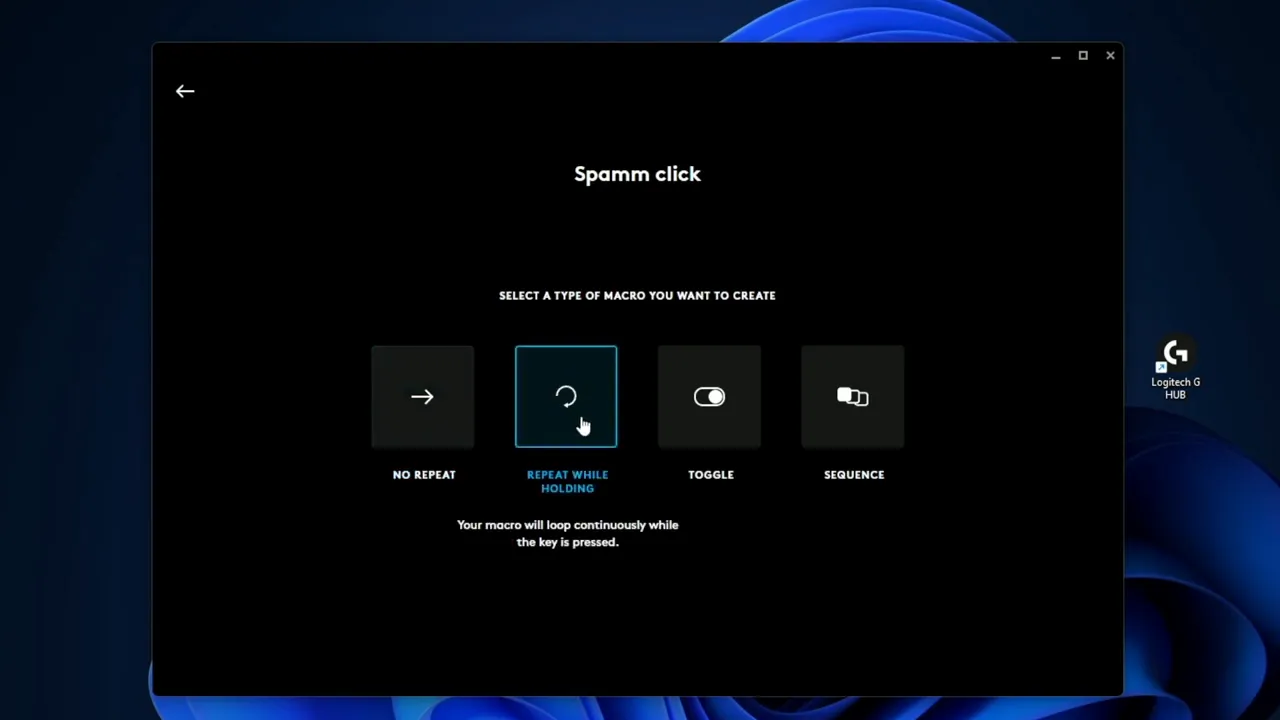
Example: a “spam click” macro. I set the macro to “while holding,” hit Start, record a mouse-down and mouse-up, then Stop and Save. Drag the macro to a key — I used F1 — and now holding that key simulates repeated clicks without tiring your finger.
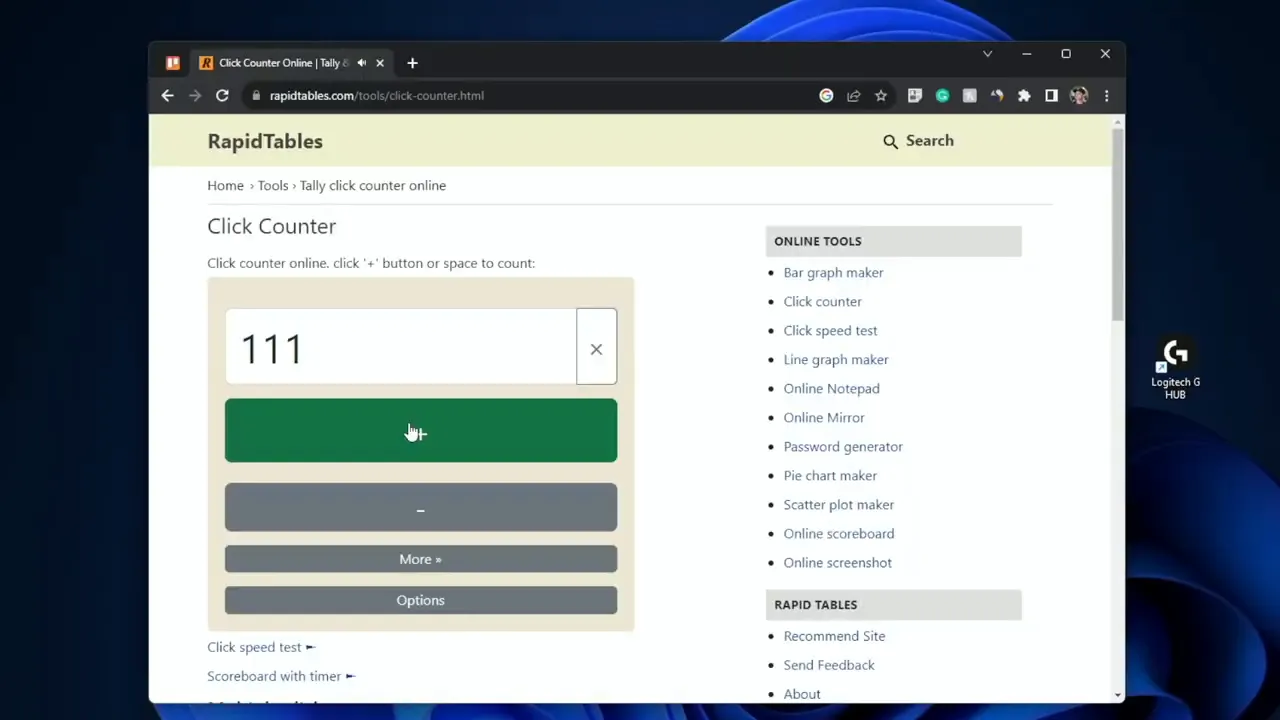
This same workflow supports delays, combined keystrokes, and more complex sequences for automation in apps or macro-heavy games.
Game Mode and per-game profiles
Game Mode lets you disable disruptive keys (like the Windows key) while you’re gaming. Toggle Game Mode on to prevent accidental interruptions; toggle it off to return to normal behavior.

At the top of G HUB you can tie profiles to specific games. Create a Valheim profile, for example, and set colors, remaps, and macros that load when that game launches. There’s also a global profile for when no game is active.
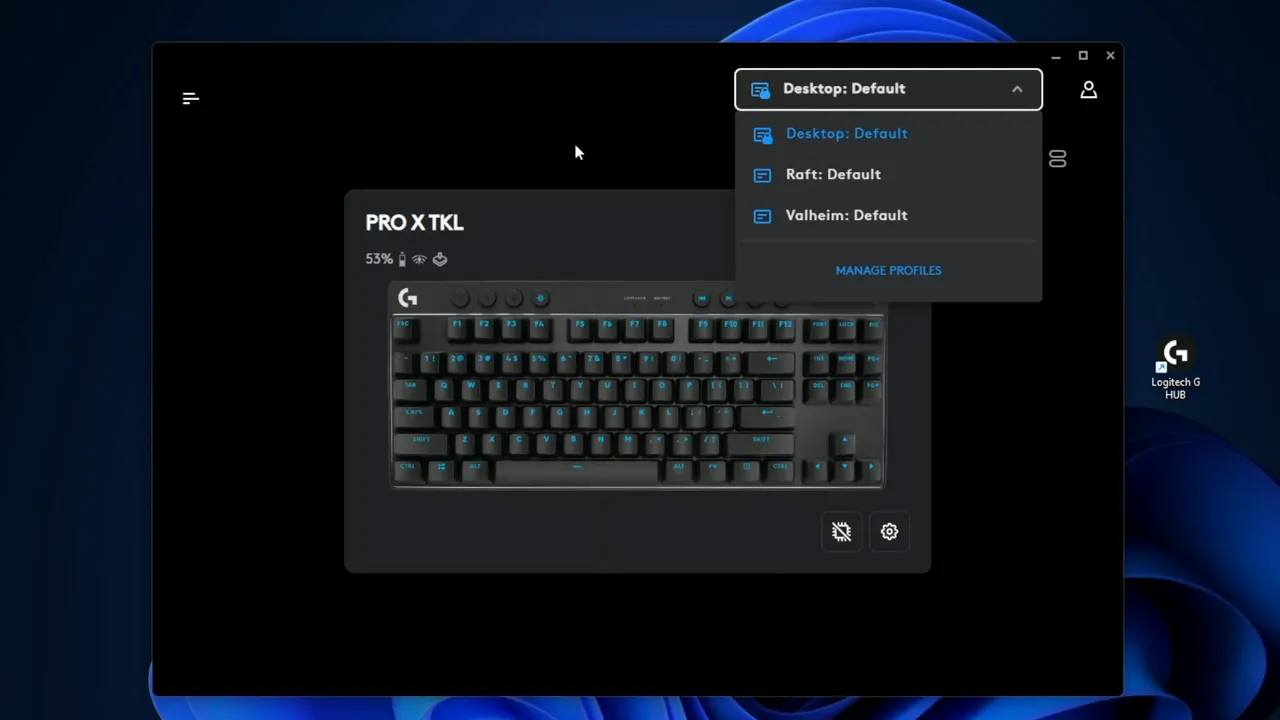
Practical tips and best practices
- Use onboard memory when you travel or switch PCs frequently so your profile travels with the keyboard.
- Keep movement keys (WASD) and important binds in contrasting colors for faster visual recognition in games.
- Use “while holding” macros for repetitive actions that would otherwise fatigue your fingers.
- Assign streaming controls (OBS) or communication actions (Discord mute) to easy-to-reach keys to streamline live sessions.
- Check firmware updates in Settings periodically to ensure optimal performance and compatibility.
Wrap-up
Logitech G HUB turns the G PRO X TKL Lightspeed keyboard into a highly customizable tool for gaming and productivity. From lighting to macros to per-game profiles, the software covers everything you need to personalize how the keyboard behaves. I keep mine mostly static blue, but the real value is how quickly you can tailor keys and actions to your workflow or playstyle.
If you want a deeper hardware review of the G PRO X TKL itself, I have a dedicated piece covering switches, build quality, and typing feel — check that out as a follow-up.
Thanks for reading — see you in the next one. Peace.